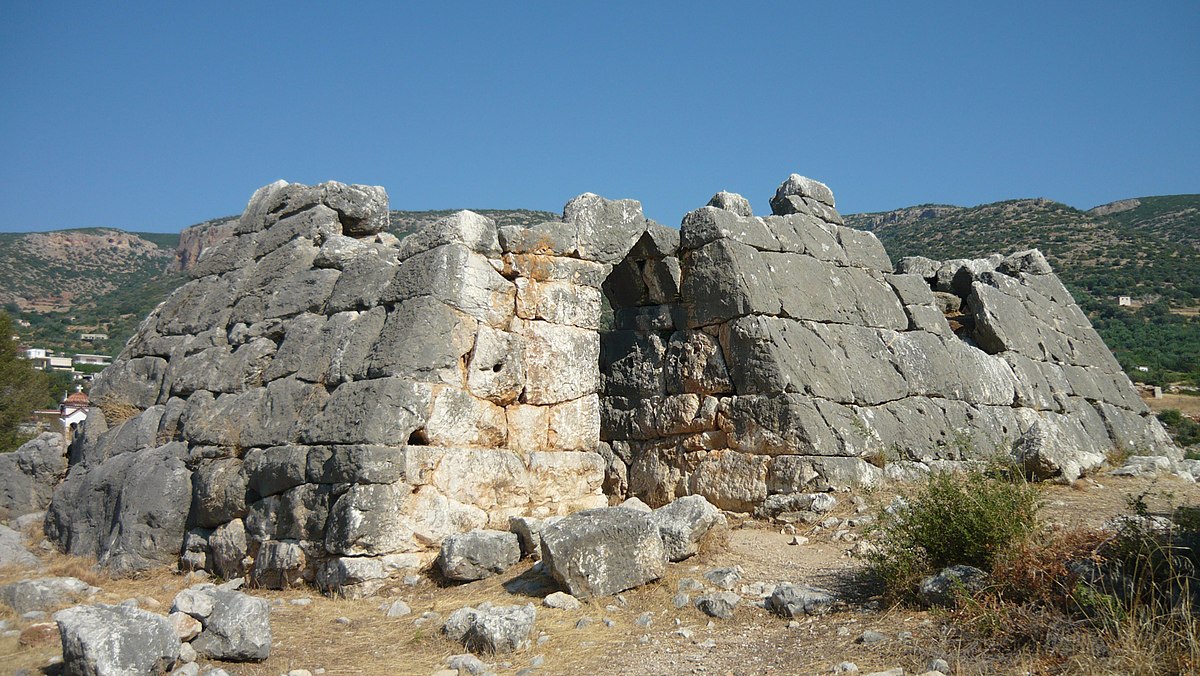A Bosnian-born American businessman, explorer, and amateur archaeologist, Sam Osmanagic was born on May 31, 1960, in Zenica, Bosnia-Herzegovina. He garnered global recognition for his contentious assertions concerning the presence of ancient pyramidal edifices in Bosnia, which he contends to be the most extensive and ancient pyramids globally. Osmanagic’s research has generated both intrigue and doubt in the archeological world, resulting in a contentious dispute on the genuineness of the Bosnian pyramids.
Osmanagic possesses a diverse and eclectic background. The individual possesses a Doctor of Philosophy degree in sociology of history from the University of Sarajevo and a Master’s degree in international economics from both the University of Sarajevo and the University of Hartford. Osmanagic’s professional trajectory encompassed a prosperous vocation in business and international relations, wherein he was employed by diverse enterprises and institutions in Bosnia and Herzegovina, alongside the United States, before engaging in archaeology.
In 2005, Osmanagic garnered significant public interest upon his declaration of unearthing a sequence of antiquated pyramidal edifices in the Visoko Valley, situated near the municipality of Visoko in the central region of Bosnia-Herzegovina. As per Osmanagic’s assertion, the monuments, referred to as the “Bosnian pyramids,” were not organic formations but rather artificial structures with a historical lineage spanning several millennia. According to him, the Pyramid of the Sun, the greatest of these pyramids, was more significant in height than the Great Pyramid of Giza in Egypt.

This alleged pyramid complex has divided the scientific community and generated intense debate among researchers. If the site is verified as authentic, it will have tremendous implications for ancient White history and the heritage of the Aryan race in Europe. For Osmanagic, these structures, including the Pyramid of the Sun, the Pyramid of the Moon, and several others, were built by an advanced civilization over 10,000 years ago. He associates this culture with the ancestors of the ancient Aryan-speaking Illyrian culture originating in the Balkans in pre-Roman times. It is often considered Proto-Thracian. Osmanagic’s dating could be more balanced for this scholar since the Illyrians, at least in their later form, were not that ancient. Still, their ancestors, also of Indo-European origin, could have built the massive structures.
Mainstream archaeologists expressed suspicion towards Osmanagic’s assertions, contending that the geological formations in the Visoko Valley were indeed natural hills rather than artificial pyramids. However, Osmanagic persevered in his study endeavors, coordinating archaeological excavations and mobilizing the assistance of volunteers and professionals hailing from many regions across the globe.
The unearthing of the Bosnian pyramids caused a surge in public curiosity and media attention, drawing in both tourists and researchers to the location. The project led by Osmanagic was granted financial assistance from both private donors and the Bosnian government, thereby enabling the execution of more exploration and excavation activities.
Notwithstanding the contentious nature of his assertions, Osmanagic and his research team have unearthed several captivating archeological revelations at the location. The findings revealed stone blocks exhibiting meticulous geometric forms, underground passageways, and antiquated relics such as pottery and implements. Osmanagic construed these findings as proof of a sophisticated ancient society that had built the pyramids.
In conjunction with his contributions to the study of the Bosnian pyramids, Osmanagic has actively participated in other archaeological endeavors and excursions across the globe. The individual has written numerous publications about ancient civilizations and alternative history theories, effectively disseminating his beliefs to a worldwide readership.
Who Were the Indo-European-speaking Illyrians?
The Illyrians were a prehistoric and Roman civilization that resided in the western Balkans region throughout the pre-Roman and Roman eras. They constituted a heterogeneous assemblage of tribes, conversing in numerous Illyrian dialects, and exerted a substantial influence on the historical trajectory of the area. Although there is a need for written records from the Illyrian perspective, our knowledge of their culture is somewhat restricted. However, archeological evidence and reports from Greek and Roman sources offer valuable insights into their society, economy, religion, and daily life.
The Illyrian civilization occupied a significant geographical expanse that included regions of present-day Albania, Croatia, Bosnia and Herzegovina, Montenegro, Serbia, Kosovo, and North Macedonia. The origins of these individuals are intricate and interconnected with the broader migrations of Indo-European populations into Europe. The Illyrians are said to have moved to the Balkans in several waves, potentially coming from the steppes of eastern Europe.
The society of Illyria was structured into tribes, each led by its chieftain or monarch. These indigenous communities frequently participated in intertribal disputes and formed alliances. The political environment was dynamic, characterized by the dynamic nature of tribe boundaries. Certain prominent Illyrian tribes, including the Ardiaei and the Dardani, arose as influential entities within their regions, frequently engaging in conflicts with nearby Greek colonies and then with the burgeoning Roman Republic.
The Illyrians predominantly engaged in agricultural practices, placing their livelihood on farming, herding, and fishing. The individuals cultivated various grains, including wheat and barley, alongside grapes and olives. Livestock, such as sheep, goats, and cattle, played a crucial role in their economic activities. Illyrians participated in trade, encompassing interactions with adjacent tribes, Greek and Roman merchants, and agricultural activities. The coastal cities of Illyria, including Epidamnos (present-day Durrús) and Apollonia, played a significant role as pivotal trading centers, enabling the smooth flow of commodities between the Adriatic Sea and the inland regions of the Balkans.
Religion substantially influenced Illyrian society; however, our comprehension of their religious convictions is restricted. Similar to numerous ancient civilizations, it is probable that the Illyrians engaged in a polytheistic religious system wherein they venerated a diverse array of deities linked to natural phenomena, fertility, and battle. The spiritual activities of the ancient civilization can be inferred from archaeological evidence, which includes sacred locations, votive gifts, and burial rituals. The Illyrians buried their deceased and grave goods in mounds and tumuli.
Conflict was an enduring characteristic of Illyrian society, as tribes competed to dominate land and resources. The Illyrian soldiers were widely recognized for their exceptional battle prowess, including their mastery of guerrilla tactics and assassination techniques. Both Greek colonists and later Roman legions found them to be dangerous adversaries. The military methods of the ancient Greeks and Romans were influenced by Illyrian fighting, leading them to use Illyrian mercenaries in their armies frequently.
In the 7th century BCE, the Illyrians established significant interactions with Greek and Roman cultures, commencing with the Greek colonization of the Adriatic coast. At first, Illyrian tribes engaged in trade and occasionally encountered conflicts with Greek colonies. However, as time progressed, they gradually assimilated Greek civilization, incorporating Greek language, art, and religious elements. The emergence of Illyrian kingdoms as significant regional actors during the 4th century BCE challenged the prevailing Greek hegemony.
The advent of the Romans in the Illyrian provinces signified a momentous juncture in their historical trajectory. The Illyrian Wars occurred in the 3rd and 2nd centuries BCE and involved conflicts between Rome and many Illyrian tribes and kingdoms. These conflicts led to the progressive encroachment of Roman dominance over the region. During the 1st century BCE, a significant portion of Illyria had been assimilated into the Roman Republic, assuming the status of the province of Illyricum.
The Bosnian Pyramids: Criticism and Debate
Regardless of the nature of Illyrian civilization and its interaction with the Roman Empire, Osmanagic’s claims that these hills are, in fact, pyramids and that they were built by either the Illyrians or an earlier prehistoric culture were met with skepticism and criticism from mainstream archeologists and geologists. Many experts argued that the alleged pyramids were natural landforms, not artificial ones. They pointed to geological evidence, such as the presence of horizontal layers of sediment, which indicated that the formations were a result of erosion rather than intentional construction.
In response to the controversy, several scientific investigations were conducted to evaluate the claims surrounding the Bosnian Pyramid. These investigations included geological surveys, ground-penetrating radar, and archaeological excavations.
One of the most prominent findings reported by supporters of the Bosnian Pyramid theory is the presence of concrete-like blocks on the surface of the pyramids. These blocks, allegedly made of artificially produced materials, have led some to argue that the structures are artificial. However, critics say these blocks could result from natural processes, such as weathering and erosion.
Furthermore, skeptics have pointed out that the shape of the “pyramids” was formed from a combination of geological factors, including the natural fracturing of rock layers and subsequent erosion. They argue that the pyramid-like appearance may be a coincidence rather than evidence of intentional construction.
The debate surrounding the Bosnian Pyramid has been intense and filled with conflicting opinions. Many mainstream scientists argue that the alleged pyramid complex results from natural geological processes and that no evidence supports the claims of an advanced ancient civilization.
However, supporters of the Bosnian Pyramid theory continue to argue that the structures are indeed artificial and hold significant historical and cultural importance. They believe that further investigation and research are needed to uncover the true nature of these formations.
Regardless of the debate, the discovery of the Bosnian Pyramids has brought attention to the region and has stimulated tourism and interest in the area. Whether the pyramids are proven to be natural formations or artificial structures, they have become a symbol of national pride and cultural heritage for many Bosnians, and if proven to have Illyrian or even more prehistoric origins, as this author asserts, they will have great implications for the Caucasian population and its heritage as well.
As with any mysterious discovery, further research and investigations are necessary to establish the true nature and origin of the Bosnian Pyramid. We can only unravel the secrets and mysteries surrounding this enigmatic complex through diligent and objective scientific exploration.
In summary, Sam Osmanagic is a multifaceted individual whose contributions have generated intrigue and contention in archaeology. Although there is ongoing debate surrounding his assertions concerning the Bosnian pyramids, his unwavering commitment to investigating alternate perspectives on history and archaeology has captivated a global audience. Whether the Bosnian pyramids are authentic ancient pyramidal formations or merely natural hills remains a contention. However, Osmanagic’s endeavors have unquestionably garnered recognition for the abundant archaeological legacy of Bosnia and Herzegovina. His efforts have cast a new light on ancient White history and contributed directly to a new and growing Aryan racial consciousness. Without question, his research has had a formidable influence on White identity and has generated a new sense of pride and distinction among White people throughout Europe and the world.

Patrick Chouinard is a distinguished expert on European history and authority on the White race and its roots. He has a BA in Global History and European Studies and currently is seeking an MA in Ancient and Classical History. He has authored six books and is a regular contributor to notable publications such as Ancient American magazine, The Barnes Review, Renegade Tribune, and Nexus. His expertise spans various facets of European history, showcasing a deep understanding and commitment to disseminating historical knowledge.





Fantastically interesting. I would like to find pictures of the pottery and other findings to see if this can be linked to another history which not recognised by “academia” such as Codex Oera Linda.